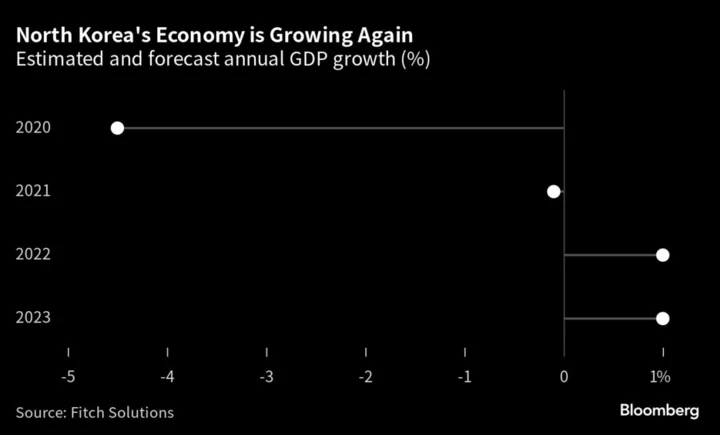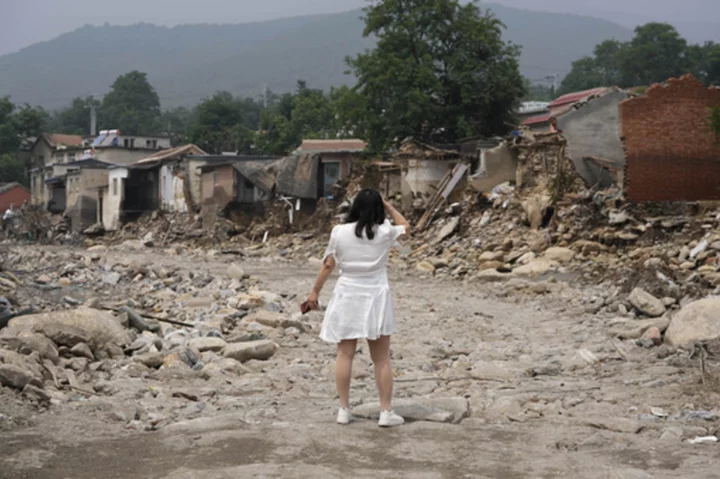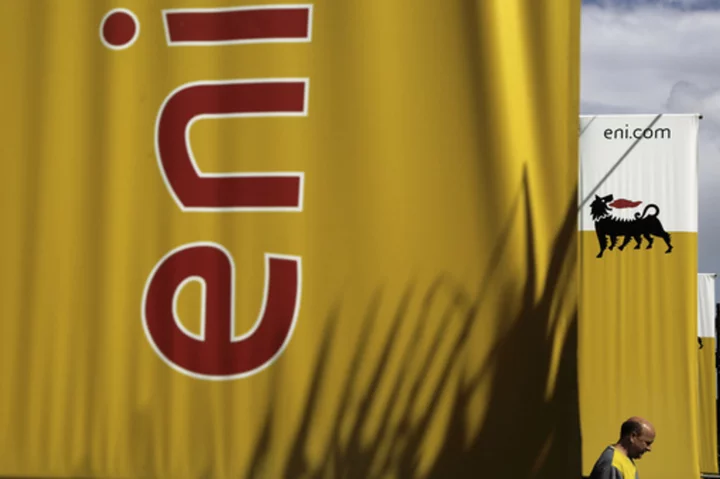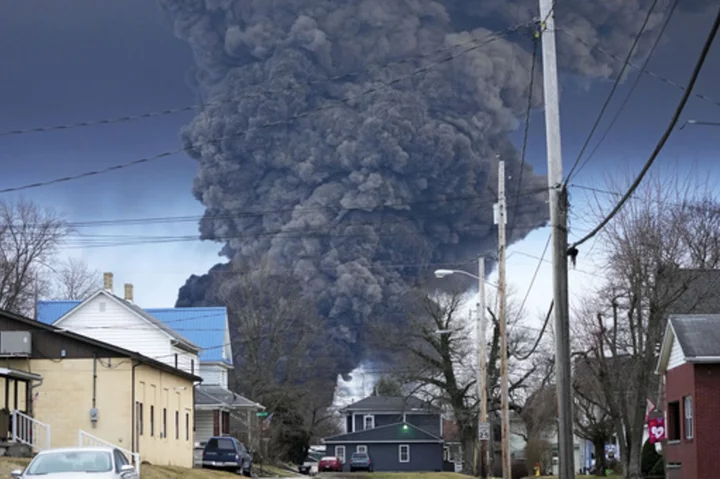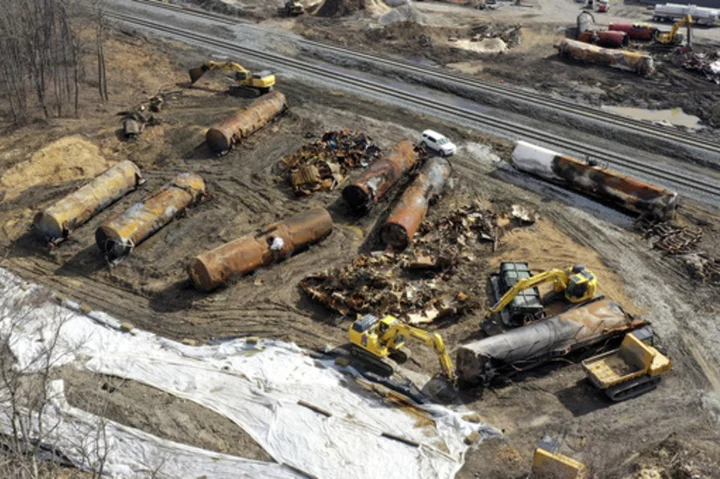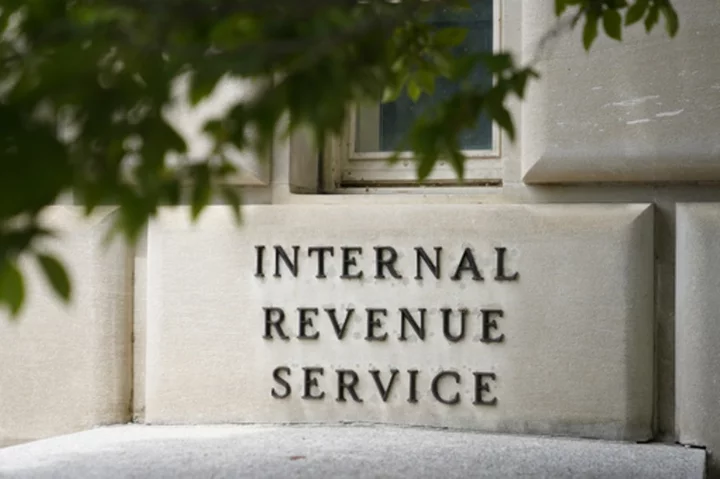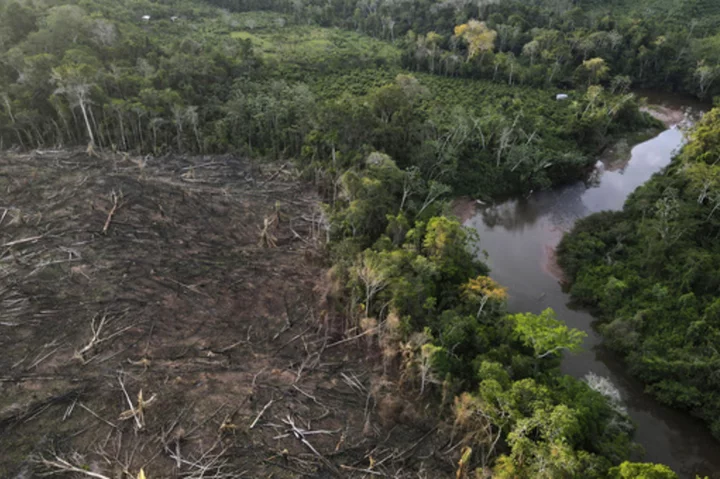Reports of new types of sugar in the local markets. Satellite imagery of trains crossing borders. Cargo ships with their transponders off. When assessing North Korea’s opaque economy, rather than hard statistics, it’s these sorts of indicators experts pore over.
And all are pointing to one conclusion: Kim Jong Un has found fresh ways to fill his depleted coffers. This money is enabling him to ignore financial incentives designed to bring North Korea back to the negotiating table, and press ahead with building his nuclear arsenal.
His grandfather, state founder Kim Il Sung, took the reins of the country with Soviet support. Now, as North Korea prepares to mark the 70th anniversary of the armistice that ended the Korean War on July 27, 1953, it’s once again Russia the regime must thank.
Russia has resumed sending oil to North Korea for the first time since 2020, the United Nations said last month. That follows an earlier restart of grain shipments. While it’s impossible to know what is going in the other direction, both the US government and independent analysts have one main thesis: munitions from North Korea’s vast stockpiles.
These interventions, of course, aren’t sufficient to restore a tattered, isolated economy to full health. Yet together with the reopening of trade links with China and other sources of income like cybercrime, the assistance from Russia is ensuring the economy remains stable enough to function, enabling Kim to continue defying the international community.
“North Korea always manages to find a way to survive,” said Rachel Minyoung Lee, a regional issues manager at the Vienna-based Open Nuclear Network who worked as an analyst for the CIA’s Open Source Enterprise for almost two decades. “There is no indication that it would return to nuclear talks anytime soon.”
Russia and China are showing their support for Kim by sending high-profile delegations to North Korea to mark the anniversary — the first such visits by foreign envoys since the Covid-19 pandemic. The Russian group arrived Tuesday night and received a welcome from top cadres.
Munitions Math
Pyongyang, which has been banned from arms sales for about 15 years, rejects accusations it is supplying Russia. Yet the White House in December said it had evidence North Korea completed an initial arms shipment to the Wagner Group for use in Ukraine that included infantry rockets and missiles.
One item that North Korea has and Russia likely wants is 152 mm artillery shells. These are interoperable with the Soviet-era weaponry that’s been pushed back into service in Ukraine. The Kremlin’s war machine has been burning through thousands daily, according to the Jamestown Foundation research group, and has been scrambling for supplies as the conflict continues.
North Korea possesses untold stores of munitions that could run into millions of rounds for an arsenal that has for decades held Seoul under the threat of devastation.
North Korea would likely jump at the chance to offload some of its stockpile at a hefty price, said weapons expert Joost Oliemans, who co-authored the book The Armed Forces of North Korea. Exactly how much they’d get would be down to their ability to negotiate.
For example, if North Korea sold shells at $1,000 each, selling 250,000 would be equal to about 1% of its GDP, according to Bloomberg News calculations. That’s a conservative estimate because high demand has driven up prices, with the 155 mm shells used by NATO forces priced at about $3,000 each.
Trade Signals
Given that both North Korea and Russia are subject to UN sanctions, both seek to conceal exactly how much trade is going on. But there are numerous signs that activity is picking up.
In late 2022, the two countries restored a rail link that had been suspended for nearly three years, according to satellite images including those from November that show a train crossing from Russia into North Korea and stopping at a freight handling station.
Kang Mi-jin, a North Korean defector who now runs a company in South Korea that watches the economy of her former home, says that her contacts report that Russian sugar has made its way into markets in recent months. It’s been warily received since it’s coarser and a darker color than what North Koreans are used to, Kang said.
There are also indications of increased activity with China after the two countries reopened their main rail link last year that had been closed since Covid. Traffic between the Chinese border city of Dandong and North Korea’s nearby city of Sinuiju can be watched on the streets in China.
The Daily NK website, part of a group of not-for-profit agencies affiliated with the South Korean Unification Ministry, said its sources on the ground have seen the length of freight trains increasing. It reports that foodstuffs and building materials are among the items making their way into North Korea.
What is nearly impossible to see is activity in a pipeline between the two cities that was exempt from sanctions and could be supplying as much as 750,000 tons (5.5 million barrels) of oil annually, according to a report from specialists David von Hippel and Peter Hayes.
Other Signs
Among the few items North Korea tries to sell abroad are commodities it can mine at home and then trade in ways that evade interception.
At its main international seaport of Nampo, the amount of shipping detectable by the outside world reached 100 vessels in the first half of this year and was on pace to triple the traffic the port had seen during the pandemic years, data from IHS Markit showed.
In a further sign that North Korea has money to spend, a United Nations Security Panel of Experts report said in March that deliveries of refined petroleum products in 2022 again exceeded the 500,000 barrel yearly amount of imports allowed under sanctions.
This year, the panel said, North Korea has also acquired six more cargo vessels in a violation of sanctions. Four of these ships were among a dozen that sailed to destinations for iron and coal in China over the past month in a bid to sell commodities mined in North Korea for hard currency, NK News reported.
Data from Bloomberg shows that five of the vessels identified by the UN have docked at least once in China since March. Vessel data showed multiple trips to a grain elevator berth near Dalian.
North Korea has also continued to dodge sanctions through the ship-to-ship transfer of commodities on the high seas often done in darkness with transponders turned off to avoid detection, the UN panel said.
Another likely source of income is cybercrime. Both the US and South Korea have accused Kim’s regime of deploying hackers to various corners of the world to fund its weapons programs.
They say these in-demand workers can make as much as $300,000 a year abroad — often remotely through freelance platforms with falsified or stolen identification — and can assist in enabling cyber attacks and cryptocurrency thefts that helped North Korea earn an estimated $1.7 billion in 2022.
Putting It Together
North Korea releases no official statistics on the size of its overall economy. With so much off the books and deliberately obscured, it is difficult to make overall assessments about the amount of economic activity.
What’s more, the country is still suffering from the pandemic, and is one of the few countries in the world not to have started a vaccination program, said Anwita Basu, an expert on North Korea and head of Europe country risk at BMI, a Fitch Solutions company.
Still, signs of a resumption of trade with China, historically North Korea’s biggest trading partner, means Fitch estimate the economy returned to growth after two full years of contraction, though significant uncertainties remain.
“The outlook for the North Korean economy is murky,” Basu said. Still, “we anticipate that the economy will remain sufficiently stable to enable Kim Jong Un to remain in power.”
However, conditions on the ground in North Korea remain bleak for the majority of the population. The World Food Programme, which had been on the ground in North Korea for years until the pandemic, estimates that 40% of the population is undernourished.
Flooding over the past few years has devastated farm land and wiped out crops, while Kim’s decision to shut the borders cut off a flow of foodstuffs that made their way to markets. The WFP is no longer distributing food, raising worries about a possible return to the famine of the late 1990s that some estimates said killed as many as 3.5 million people over a number of years.
Self-Reliance Doctrine
Kim’s state propaganda machine still leans heavily on a self-reliance doctrine forged by his grandfather calling on its citizens to help one another in the face of what it sees as the hostile intents of the US to cripple its economy and topple its rulers.
Even as investment in big-ticket items such as power plant construction have faltered after sanctions were tightened in 2017 to halt the import of machinery, Kim’s government has stepped up other symbolic projects.
The state-run Korean Central News Agency has mentioned “housing construction” about 200 times in about the past two years, according to a database search.
Kim “has become the great pioneer and creator for realizing the socialist ideal to devote himself to building the people’s paradise as soon as possible,” KCNA said when Kim attended a ground-breaking ceremony in February punctuated by fireworks and cheers from the masses for a project to build 10,000 new apartments in Pyongyang.
These costs, though, pale compared to the money spent on armaments. Kim’s regime spent an estimated $400 million to $650 million to build and test the 33 missiles it fired off in the first half of 2022, data compiled by the Korea Institute for Defense Analyses, a government-affiliated military research center, show.
It ended up shooting off more than 70 that year, meaning it could have spent more than $1 billion for missiles tested. That is equal to about 4% of its $25 billion economy.
The US, South Korea and Japan have said Kim would be better off using the money spent on missiles to feed his people. But Kim’s defiance of the international community has gained him some measure of security against the risk of any US action. His weapons program has evolved to a point that he could have enough in his arsenal to deliver a credible nuclear strike on South Korea and Japan — the two Asian nations that host tens of thousands of US military personnel.
And he is showing no signs of slowing down. Following 2022’s record-breaking series of tests, Kim has again ramped up his military program this year. Just this month, he tested a new intercontinental ballistic missile designed to strike the US mainland.
“Russia’s war in Ukraine is likely emboldening Kim Jong Un to behave more aggressively,’’ said Duyeon Kim, an adjunct senior fellow in Seoul at the Center for a New American Security. “China and Russia have both failed to fulfill their sanctions obligations under UN Security Council resolutions, which is why sanctions have not been working properly and they’re enabling Pyongyang to continue with its nuclear weapons development and provocative behavior.’’
--With assistance from Kevin Varley.
(Corrects inaccurate Russian flag in embedded video.)

